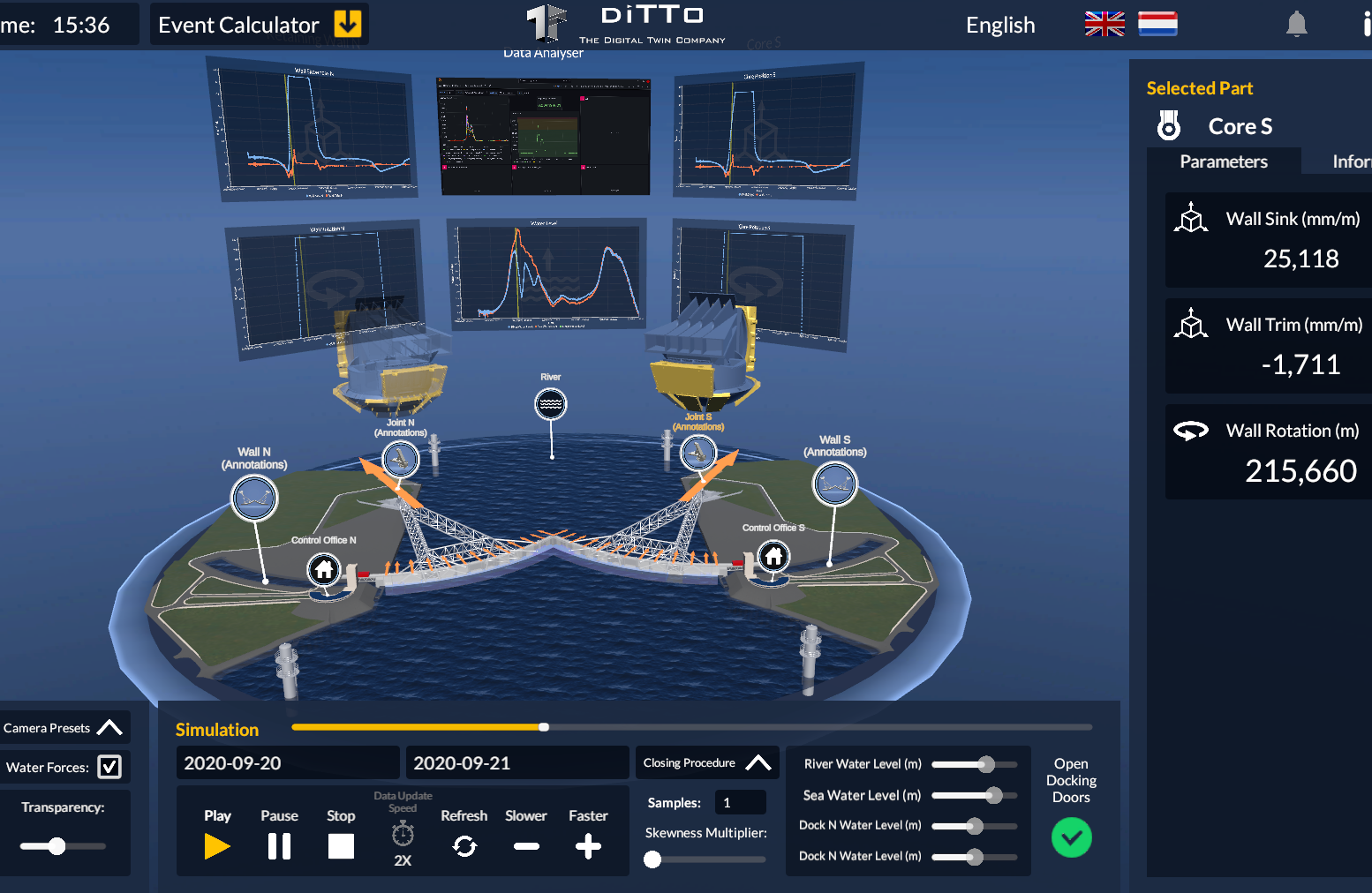What is a Digital Twin?
A digital twin is a cyber-physical representation of a physical entity, system, or process that encompasses both its geometric and functional attributes. It operates in real-time, dynamically mirroring the behavior, status, and interactions of the corresponding physical counterpart. This happens through continuous data exchange, simulation, and analytics, thereby enabling virtual experimentation, analysis, optimization, and decision-making to enhance performance and outcomes. The digital twin is designed to provide a real-time simulated representation of the physical object or system, using computer models to simulate its behavior. The goal is to create a more efficient and effective physical object or system by optimizing its performance in the virtual world.

What does a Digital Twin do?

Digital twins exist at many scales and levels of complexity, from a single component (e.g. a pump or valve) or asset (e.g. bridge, sea lock or storm surge barrier) to systems of connected digital twins (e.g. a vessel’s digital twin sending signals to an offshore wind farm’s digital twin), up to an ecosystem of connected digital twins (e.g. networks of service-based assets, such as healthcare facilities or transport). On every level, digital twins tend to improve performance and use a data-driven and knowledge-based approach with five types of application: (i) optimize supply and demand; (ii) operations and performance, i.e. support monitoring and predictive maintenance, as well as early-warning and disaster preparedness; (iii) live data management to support in optimizing processes, planning, decision-making and budgeting; (iv) simulate prototypes and scenarios; (v) optimize knowledge and information management. As a result, digital twins are perceived to improve efficiency, security, safety, reliability, decision-making and flexibility. These combined effects lead to time saving for workers and better control of risks, therefore reducing costs.
A digital twin doesn’t come ‘in a box’, meaning it is a product that is not easily standardized for different kinds of situations. However, a digital twin should contain several basic elements in order to be rightly called a digital twin.
Based on several publications, five basic elements of a digital twin are derived that form the basis for the digital twin designing process in this research, which are:
Service
A digital twin should provide a (or multiple) specific kind of service(s). It should be a contribution to the solution for an existing problem or improve existing processes. This service could for instance be a support aspect for better control or improve information related processes.
Data Interaction
It involves continuous data exchange (preferably real-time) between the digital twin and its physical counterpart, ensuring up-to-date synchronization and informed decision-making.
Accurate Representation
A digital twin must faithfully and visually replicate the physical entity, capturing its geometry, structure, and behaviour in a virtual environment.
Simulation and Analysis
The digital twin employs simulation, modelling, and data analytics to simulate behaviour, predict outcomes, and provide insights for optimization and operational improvement.
Control
The digital twin can control the real-world object or the processes around it. This could either be directly by the digital twin, or via an intermediate step by the operator of the physical object based on information from the digital twin application.

Based on the consulted literature, a schematization is made for a digital twin (see Figure) and its interactions with external sources, to indicate the difference between a digital twin and the external sources. The digital twin (represented in the middle of the figure) has a connection with all kinds of data sources, models, analysis tools and/or other digital twins. The digital twin is the model that connects these elements to each other to form the representation or simulation of the physical counterpart. The results are continuously sent to the digital twin user interface, where the user can give commands to the digital twin or view results created by the digital twin.
